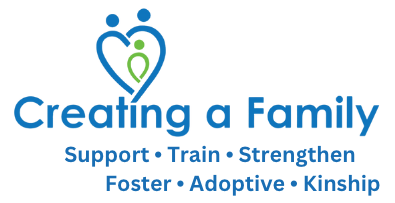1. The Parents
Hopeful parents considering adoption from Thailand must be married, heterosexual couples for at least two years with no more than one previous divorce each. Single parents are considered for specific waiting children. Please seek the counsel of your adoption service provider (ASP) for those details.
Applicants must be at least twenty-five and 15 years older than the child to be adopted. Prospective mothers must be under forty and fathers under forty-five when the Child Adoption Committee (CAC) reviews the dossier. There can be exceptions made for the Waiting Child program. These requirements also apply when adopting relative children. Couples must have a minimum of a high school diploma (or equivalent) and be financially stable, with no significant criminal history.
Prospective parents with documented infertility (or other reasons that pregnancy is not advisable) are preferred for the traditional program. Thailand requires parents to be relatively healthy, with no other significant current or past health concerns (including but not limited to cancer, immune disease, degenerative conditions, etc.) and a BMI under 35. They will review applicants with current or past mental health medications or diagnoses on a case-by-case basis, particularly for applicants to the Waiting Child program.
2. The Family
Thailand requires no more than one child already in the home. The resident child must be at least one year older than the child to be adopted. Special waivers for families larger than this must be requested through your adoption service provider (ASP) to the Child Adoption Committee (CAC). Exceptions are more likely for families willing to consider children with special needs through the Waiting Child program.
3. The Kids
The Thai children available for adoption through the traditional quota program are typically between the ages of one and five. They may be healthy or have medical needs already treated, resolved, or well-managed. In 2022, 51% of the children placed were male, and 49% were female. Most were between five and 12 years old.
There are also occasionally Waiting Children in need of adoptive homes. These are typically older kids or those with more complex medical or developmental needs. Sibling groups are rare but would be considered part of the Waiting Child program.
Thailand’s government and charity-run orphanages are well-supported by their businesses and communities because of their national sense of responsibility and commitment to their orphaned children. Because of this, the children are cared for very well. However, most children who have experienced institutional living will have mild to moderate developmental delays in speech, motor skills, or other areas. Additionally, the children have already had challenging starts in their lives, bringing additional risk factors and impacts.
4. The Process
Prospective families should consider an adoption service provider (ASP) with a robust accredited Thailand program to begin the home study and dossier preparation process. Your agency will provide you with the list of required documents for your dossier, a timeline for your home study, and the Thailand government’s side of the process.
Thailand’s Central Adoption Authorities are the Child Adoption Center (CAC) division of the Department of Children and Youth (DCY). As a Hague Convention country, Thailand has authorized a few specific private children’s homes to work with foreign agencies to place children through international adoption. Your ASP can provide more information on current identified homes.
Through the quota program, a family’s application must first be approved by the agency and USCIS for adoption from Thailand. Their home study and dossier are submitted for a match consideration. Then the NGO attached to your ASP proposes a match of a child to a family. DCY reviews and approves the proposed match and issues an official referral.
Families interested in a specific Waiting Child can also submit a Letter of Intent to DCY for consideration.
5. The Travel
Once USCIS child-specific approvals are complete and Article 5 is issued, the ASP will secure and confirm an appointment with the Child Adoption Board (CAB) in Thailand, which allows you to travel.
Both parents must travel to Thailand to meet their child. The in-country trip lasts 10 to 16 days, depending on how long it takes to process the child’s travel visa and passport. Please check with your adoption service provider for additional details about travel plans, guides, and recommendations for your stay.
Your child will enter the US on an IH-4 VISA. Adoptions from Thailand are finalized in the United States, meaning the adoption must be completed in your local family court system. As part of the post-adoption reporting requirements, your ASP must receive a copy of your state of residence’s finalized adoption decree and new birth certificate.
6. The Program
Thailand is a signatory to the Hague Convention and enjoys a stable, growing program. There were 49 adoptions from Thailand in 2022, compared to 38 in 2021, 23 in 2020, and 38 in 2019.
7. The Cost
The Median Adoption Service Provider Convention Fee for 2022 was $30,383.00, according to the State Department’s FYE 2022 Annual Report. This estimate does not include documentation and notarizations required for a dossier or education fees. Families should expect their total cost to range from $25,000 – $40,000, including travel expenses.
8. The Needs
Children adopted through the traditional (or quota) program may have minor to moderate medical needs that have already been treated, resolved, or are well-managed. They may also have medical histories that include prenatal exposure, prematurity, or respiratory, ear, and other mild infections.
Waiting Children from Thailand are typically four years or older and have documented more complex medical needs. Such issues might include developmental delays, heart conditions, respiratory conditions, hearing loss, cerebral palsy, or ADHD. Occasionally, older children (ages seven and older) are medically healthy but classified as Waiting Children because of their age. Again, the parental eligibility guidelines can be flexible for families who seek to adopt Waiting Children.
9. The Post-Adoption Reports
Thailand requires adoptive parents to submit written post-placement reports to their ASP at two (2) months, four (4) months, and six (6) months after arriving home with their child. These reports should include 6-8 photos of your child, a summary of the health and well-being of the child, and information on how your family is adjusting. Your ASP will send these reports to DCY.
Approximately 6-12 months after submitting your final post-placement report, your ASP should receive an invitation for your family to register at the Thai consulate or embassy nearest your home. DCY requires this registration. It is your responsibility to contact the consulate and schedule an appointment. The consulate will advise you on what paperwork to bring. You should provide a copy of the registration to your ASP for your files and for the ASP to forward to the orphanage and/or DCY. This step completes your adoption process from Thailand.
You must also submit your child’s US Certificate of Citizenship as part of your post-adoption process by completing form N-600.
CreatingaFamily.org always urges families to comply with post-adoption requirements promptly. Your cooperation contributes to the program’s stability and strengthens Thailand’s history of positive experiences with US citizen parents.
10. The Additional Resources
- U.S. Department of State Intercountry Adoption from Thailand
- U.S. Department of State Intercountry Adoption Statistics
- U.S. Department of State Annual Report on Intercountry Adoption, FY 2022
- Adopting Children in Thailand, from ThaiEmbassy.com
- Creating a Family’s International Adoption Resource page
- Madison Adoption Associates Thailand Program
- Sunrise Family Services Society Thailand Adoptions
This information is current as of September 2023 and represents our best estimates and approximations only. Depending upon your individual circumstances, even the widest ranges can vary greatly. Please always refer back to your chosen adoption service provider for specifics regarding your process.
This information is subject to change; therefore, check with an agency approved to place from this country for the most current information.
© Creating a Family
Image Credits: Andrew Jones; Piya Nimityongskul



